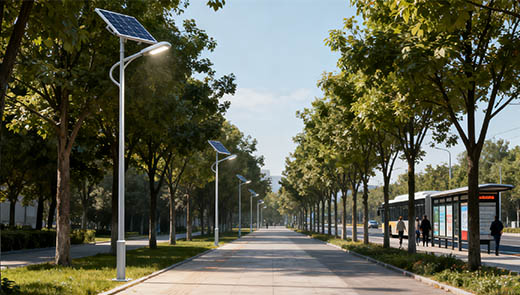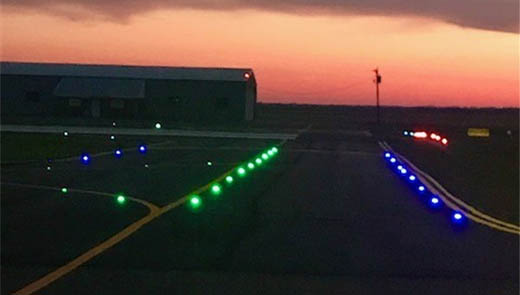Reasons Why Solar Street Lights are not Charging Well
In the current era of promoting green energy and sustainable development, solar street lights have become a popular choice for urban and rural road lighting due to their advantages of zero carbon emissions and no need for complex cable installation. However, some users have reported that solar street lights have poor charging performance, which not only affects lighting effectiveness but also reduces the user experience of the equipment. To address this issue, we must first understand the working principle of solar street lights, then analyze the causes of poor charging performance, and finally identify corresponding solutions.
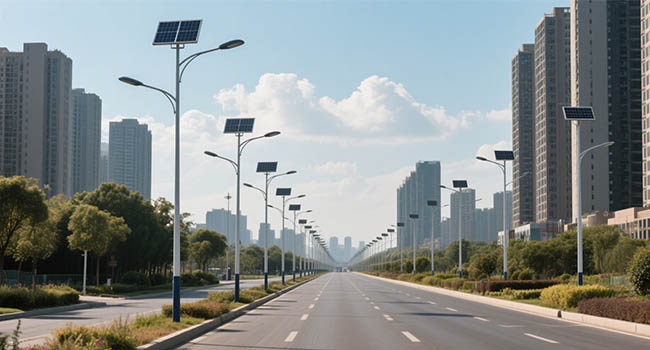
Working Principle of Solar Street Lights
The working principle of solar street lights is simple yet scientifically sound. Their core component, the photovoltaic cell, converts sunlight into electrical energy—a process known as the “photovoltaic effect.” The semiconductor materials within the photovoltaic cell play a crucial role in this conversion. The converted electrical energy is stored in the solar battery.
When the ambient light intensity drops below 10 lux, the circuit voltage of the solar battery panel, approximately 4.5V, is activated. At this point, the charge/discharge controller determines the voltage value flowing from the battery to other parts of the street light system. Additionally, the charge/discharge controller plays a crucial role in protecting the battery, preventing overcharging or over-discharging.
Analysis of the Reasons for Poor Charging of Solar Street Lights
Climate Factors
Solar radiation, as the primary energy source for solar panels, directly influences charging efficiency through its intensity and duration. Taking London, UK, as an example, winter often sees consecutive periods of over 30 days of cloudy weather. Under such conditions, the effective solar radiation received by solar panels is only 20%–30% of that on sunny days, leading to a significant reduction in charging capacity. In cold Nordic regions like Tromsø, Norway, the sun's altitude angle drops below 15° in winter.
Even if solar panels are exposed to sunlight all day, the radiation received per unit area is far lower than in summer, resulting in a 40%–50% decrease in charging efficiency. This insufficient sunlight caused by climate conditions directly impacts the nighttime lighting duration and endurance of solar street lights.
Pollution of Solar Panels
Solar panels exposed to outdoor environments are highly susceptible to contamination. In industrial cities like New Delhi, India, where PM2.5 concentrations frequently exceed standards, solar panels can accumulate a layer of fine dust on their surfaces within just one week, reducing photovoltaic conversion efficiency by 15%–20%. In areas with high bird activity, bird droppings not only block sunlight but also corrode the coating on the surface of solar panels due to their acidic components, causing irreversible damage. Statistics show that solar street lights along major traffic arteries experience a monthly decrease in photovoltaic conversion efficiency of approximately 5% due to pollution from vehicle exhaust and dust, with cumulative reductions reaching up to 60% annually.
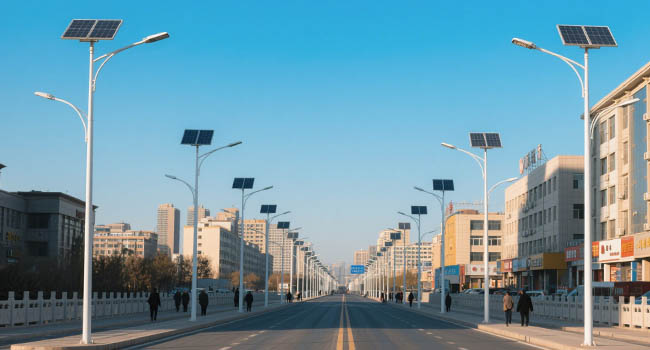
Battery Aging
The batteries used in solar street lights undergo complex chemical reactions during charging and discharging. Taking lead-acid batteries as an example, prolonged charging and discharging causes the active material on the plates to gradually peel off, leading to a decline in battery capacity. If overcharging occurs during charging, a large amount of gas is produced inside the battery, accelerating plate aging. Generally, after 300–500 complete charge-discharge cycles, the capacity of a lead-acid battery decreases to 70%–80% of its initial value. While lithium-ion batteries have a longer cycle life, using them in high-temperature or low-temperature environments can accelerate the decomposition of internal chemicals, shortening the battery's lifespan and significantly reducing the streetlight's nighttime illumination time.
Connection Line Problems
The lines connecting the solar panels, batteries, and controllers may experience poor contact, aging, or corrosion, leading to current transmission losses and preventing the battery from receiving sufficient power. Connection issues may also cause streetlight flickering or failure to turn on properly.
Controller Failure
The solar charge controller serves as the regulatory hub of the system. When the controller malfunctions, charging voltage and current cannot be precisely controlled. For example, if the controller's MPPT (maximum power point tracking) function fails, the output power of the solar panels may decrease by 30%–40%, preventing the full conversion of solar energy into electricity. If the overcharge protection function malfunctions, the battery may remain in an overcharged state for an extended period, accelerating the evaporation of internal moisture and sulfation of the plates. A battery that should last five years may need replacement after just one to two years. Additionally, controller malfunctions may cause irregular lighting times for street lights, affecting normal illumination.
Improper Installation Angle
The installation angle of solar panels is critical for charging efficiency. If the angle is improper, the panels cannot fully absorb sunlight, especially in winter or high-latitude regions where the sun's altitude angle is low, making improper installation angles more problematic.
Unsuitable Solar Panel
The power rating of the solar panel must match local climate conditions and lighting requirements. If the power is too low, it may not meet battery charging needs; if the selected solar panel is not suitable for the local climate, such as using a solar panel designed for warm regions in cold regions, its charging efficiency will be significantly reduced.
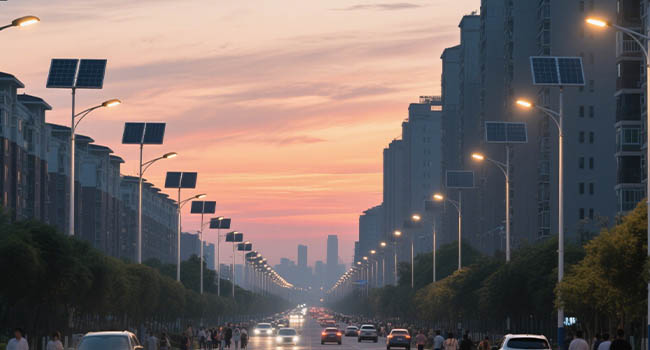
Solutions for Poor Charging of Solar Street Lights
Clean the Panels Regularly
Regularly cleaning solar panels is key to improving charging efficiency. Dust, bird droppings, fallen leaves, and other contaminants can accumulate on the panels, forming a layer that blocks light. In cities with severe industrial pollution, cleaning once a month can improve photovoltaic conversion efficiency by 15%-20%. When cleaning, it is recommended to use a soft fiber cloth with a specialized solar panel cleaner, avoiding sharp tools like steel wool that could scratch the panel surface. Additionally, disconnect the power before cleaning to prevent electric shock risks. For solar panels installed at higher elevations, use an extendable pole cleaning tool or hire a professional cleaning team to ensure thorough cleaning.
Check the Battery Status
Conducting a full charge and discharge test every quarter can effectively activate battery activity and extend its service life. Additionally, in high-temperature or low-temperature environments, strengthen monitoring of battery status to avoid irreversible damage caused by extreme temperatures.
Maintain the Connection Line
Inspect the connection lines monthly to check for damage, corrosion, or loosening. Line aging is a common issue, especially in high-temperature and high-humidity environments, where the insulation layer of the lines is prone to aging and cracking. For copper wires, if green rust appears, sandpaper can be used to grind the surface, followed by applying conductive grease to enhance conductivity. In coastal areas, it is recommended to use tin-plated wires, which have corrosion resistance 30% higher than ordinary copper wires. If loose connections are detected, reconnect or weld the joints and ensure proper insulation. Additionally, regularly inspect the wire clamps to prevent wear caused by wind-induced movement.
Detect the Controller
Use diagnostic tools to test the controller's performance and verify that its charging and discharging control functions are operating normally. Modern solar charge controllers are often equipped with LED indicator lights, which can provide preliminary fault diagnosis through different flashing patterns. Additionally, regularly updating the controller's firmware can optimize its operational efficiency and prevent charging abnormalities caused by software issues.
Adjust the Installation Angle
The optimal installation angle for solar panels is typically close to the local latitude. For example, in a region at 30° north latitude, the tilt angle of the solar panels can be set to approximately 30°, though this is not a fixed value. In summer, the tilt angle can be slightly reduced to increase sunlight reception during early morning and evening hours; in winter, the angle should be increased to address the issue of lower solar altitude angles. In snowy regions, the angle can be adjusted to over 45° in winter to facilitate snow accumulation. For adjustable mounts, it is recommended to install angle sensors to automatically adjust the angle according to seasonal changes. According to calculations, reasonably adjusting the installation angle can increase the annual power generation of solar panels by 10%-15%.
Choose the Right Equipment
Select solar panels, batteries, and controllers appropriately based on local climate and lighting requirements. In regions with abundant sunlight, high-efficiency monocrystalline silicon solar panels can be chosen; in areas with weaker sunlight, polycrystalline silicon or thin-film solar panels offer better cost-effectiveness. Battery selection should consider endurance requirements; if continuous lighting is needed for three consecutive days of cloudy or rainy weather, the battery capacity should be calculated based on the streetlight power. In cold regions, choose low-temperature-resistant lithium batteries, which can maintain over 70% discharge performance at -20°C.
Professional Maintenance Service
When lacking professional knowledge and maintenance experience, it is recommended to hire professional technicians annually for a comprehensive inspection and maintenance of solar street lights. Professionals can identify potential issues and perform in-depth maintenance to extend the lifespan of the street lights.
How to Choose the Best Solar Street Light Battery?
Battery Type
Among various battery types, lithium iron phosphate (LiFePO4) batteries stand out for their excellent safety, a lifespan of 7–10 years, and high efficiency, making them an ideal choice for solar street lights. Their olivine structure provides high-temperature stability, preventing thermal runaway even in environments above 60°C, significantly reducing the risk of spontaneous combustion or explosion. Compared to traditional lead-acid batteries, LiFePO4 batteries do not require regular electrolyte replenishment and can withstand over 2,000 charge-discharge cycles, which is 4–5 times more than lead-acid batteries.
In southern regions with high temperatures and frequent rainfall, lead-acid batteries often have a service life of less than 3 years due to corrosion and self-discharge issues, while LiFePO4 batteries can operate stably, reducing the costs and maintenance pressures associated with frequent replacements.
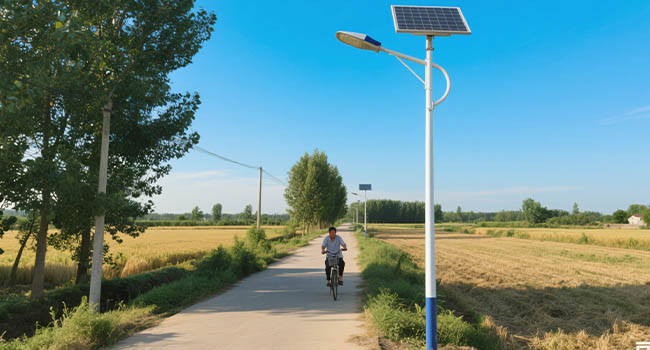
Capacity
Battery capacity must be determined by considering the wattage of the street lights, lighting duration, and backup requirements. Taking a 40W LED streetlight as an example, with 12 hours of daily lighting and a 2-day backup period, the theoretical power consumption is 960Wh. However, considering the 80% discharge depth limit of the battery, the actual capacity requirement must reach 1200Wh, with an additional 20% margin, resulting in a final determination of 1,440Wh. In regions with unstable sunlight, such as high-latitude winters with short daylight hours and frequent cloudy days, battery capacity should be further increased, typically configured at 1.5 to 2 times the standard requirement, to ensure continuous lighting during extreme weather conditions and prevent nighttime lighting interruptions.
Weather Resistance
Selecting batteries with appropriate IP protection ratings is critical. Batteries with an IP65 rating are completely dust-tight and resistant to low-pressure water jets, making them suitable for most outdoor scenarios. In coastal areas, where salt fog corrosion and heavy rains are common, IP65 protection prevents moisture ingress and short circuits, safeguarding the battery's internal structure. For high-altitude and extremely cold regions, in addition to IP protection, it is also necessary to choose low-temperature resistant models. Some batteries can still charge and discharge normally at -40°C, ensuring stable operation under extreme climatic conditions and extending battery life.
Issues with poor charging in solar street lights can be addressed by conducting a thorough analysis of the causes and implementing targeted solutions. Additionally, selecting the appropriate battery and performing regular maintenance can ensure the stable and efficient operation of solar street lights, fully leveraging their green and energy-saving advantages.


